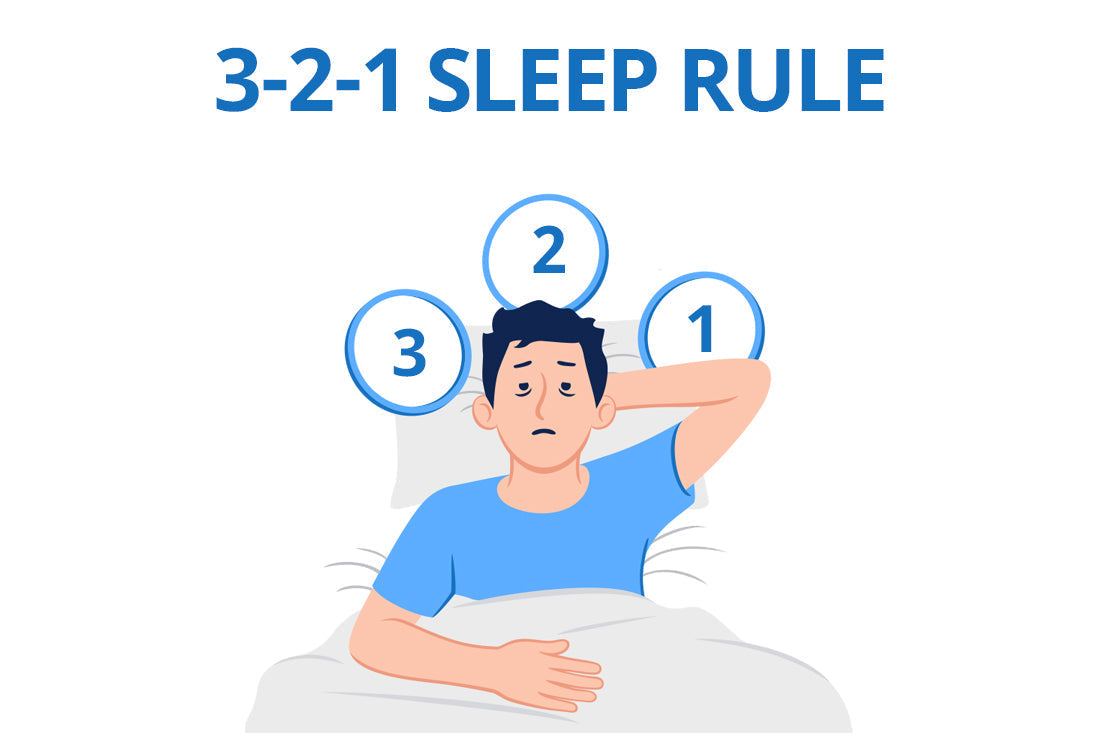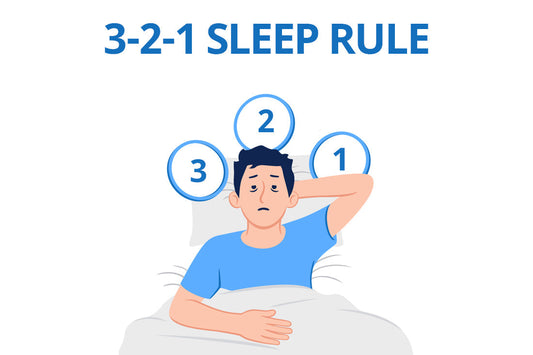Ever find yourself tossing and turning at night or waking up feeling like you barely slept? You’re not alone. With long workdays, screen time, late-night snacks, and endless to-do lists, getting quality rest can feel like a challenge. But there’s a simple method gaining attention for its ability to help restore a more natural sleep pattern — the 3-2-1 sleep rule.
This method is not a miracle fix or a quick trick. It’s a simple, time-based guideline that helps you ease into bedtime, support your body’s natural sleep-wake cycle, and wake up feeling more refreshed. Let’s explore what the 3-2-1 rule is, how it works, and whether it might be the key to a good night’s rest.
What Is the 3-2-1 Sleep Rule?
The 3-2-1 sleep rule is a bedtime routine that breaks down the last three hours before you sleep into simple steps:
- 3 hours before bed: Stop eating food or drinking alcohol.
- 2 hours before bed: Finish any work-related tasks.
- 1 hour before bed: Shut off screens and focus on relaxing.
It may sound easy, but these small changes can help you fall asleep faster and stay asleep longer.
Why is the 3-2-1 sleep rule the key to a good night's rest?
Understanding Your Sleep-Wake Cycle
Our bodies run on an internal clock called the circadian rhythm, which regulates when we feel awake and when we feel sleepy. This rhythm works best when it follows a regular pattern. But late meals, screen time, and stress can throw it off balance.
The 3-2-1 rule helps line up your actions with your natural sleep-wake cycle. By preparing your body in stages, you give yourself the best chance to enter deep stages of rest like REM sleep, which is important for memory, mood, and energy levels.
Breaking Down the Rule
3 Hours Before Bed: No Food or Alcohol
Eating close to bedtime can cause discomfort, bloating, or even heartburn — all things that might make it harder to fall asleep. Drinking alcohol might make you feel sleepy at first, but it can actually interrupt your REM sleep and cause you to wake up during the night.
Instead, aim to have your dinner at least 3 hours before bed. This gives your body enough time to digest your food before you lie down. If you feel hungry later, go for a light snack like a banana or a few almonds — nothing too heavy.
2 Hours Before Bed: Step Away from Work
Many of us are guilty of checking one last email or finishing a task late at night. But this keeps your brain in “work mode,” making it harder to wind down. This habit can also increase stress and make your thoughts race when you’re trying to rest.
Set a clear boundary by wrapping up your work at least 2 hours before bed. Use this time for light activities like reading, taking a warm shower, or chatting with family. Creating a habit like this helps signal to your brain that bedtime is coming.
1 Hour Before Bed: No Screens
Phones, laptops, and TVs all give off blue light, which can block melatonin — the hormone that helps you feel sleepy. Scrolling through social media or watching TV might seem relaxing, but they can actually keep your mind active and make it harder to sleep.
Try turning off all screens 1 hour before bed. Replace screen time with calming activities like journaling, listening to soft music, stretching, or doing a short meditation. These habits can help ease your body into a relaxed state, setting the tone for sleep.
Comparing the 3-2-1 Rule to the 10-3-2-1-0 Rule
You might have heard of the more detailed 10-3-2-1-0 sleep rule, which suggests:
- 10 hours before bed: No more caffeine
- 3 hours before bed: No food or alcohol
- 2 hours before bed: No more work
- 1 hour before bed: No screens
- 0: The number of times you hit the snooze button
While both follow a similar idea, the 3-2-1 rule keeps it simple and easy to follow. It works well for people just starting to focus on their sleep hygiene without getting overwhelmed.
If you want to go deeper later, you can always build toward the 10-3-2-1-0 method.
Tips to Build a Better Bedtime Routine
Following the 3-2-1 rule is a great start, but combining it with other healthy habits can help maintain a consistent sleep pattern:
- Set a regular sleep and wake time — even on weekends
- Limit caffeinated drinks in the afternoon
- Create a calm sleep space that’s dark, cool, and quiet
- Use your bed only for sleep and rest, not work or eating
- Avoid hitting the snooze button, as it can confuse your sleep cycle
Over time, these habits can help ease discomforts like restlessness or grogginess and help restore a more natural sleep rhythm.
What If It’s Still Hard to Sleep?
If you’re still finding it hard to fall asleep, stay asleep, or wake up rested, you might be dealing with a sleep disorder. In that case, it’s worth talking to a healthcare provider or sleep specialist. But for many people, small daily habits like following the 3-2-1 rule can make a big difference in the long run.
Conclusion
The 3-2-1 sleep rule is a simple way to support your body’s natural sleep pattern and help you get the rest you need. By avoiding food or alcohol three hours before bed, stopping work two hours before, and shutting off screens one hour before, you give yourself time to unwind and gently move into sleep mode.
It’s not about being perfect every night, but about creating a routine that feels doable and supportive. So if you're tired of tossing and turning or hitting the snooze button over and over, give the 3-2-1 rule a try. Sometimes, the smallest changes make the biggest difference — especially when it comes to sleep.






